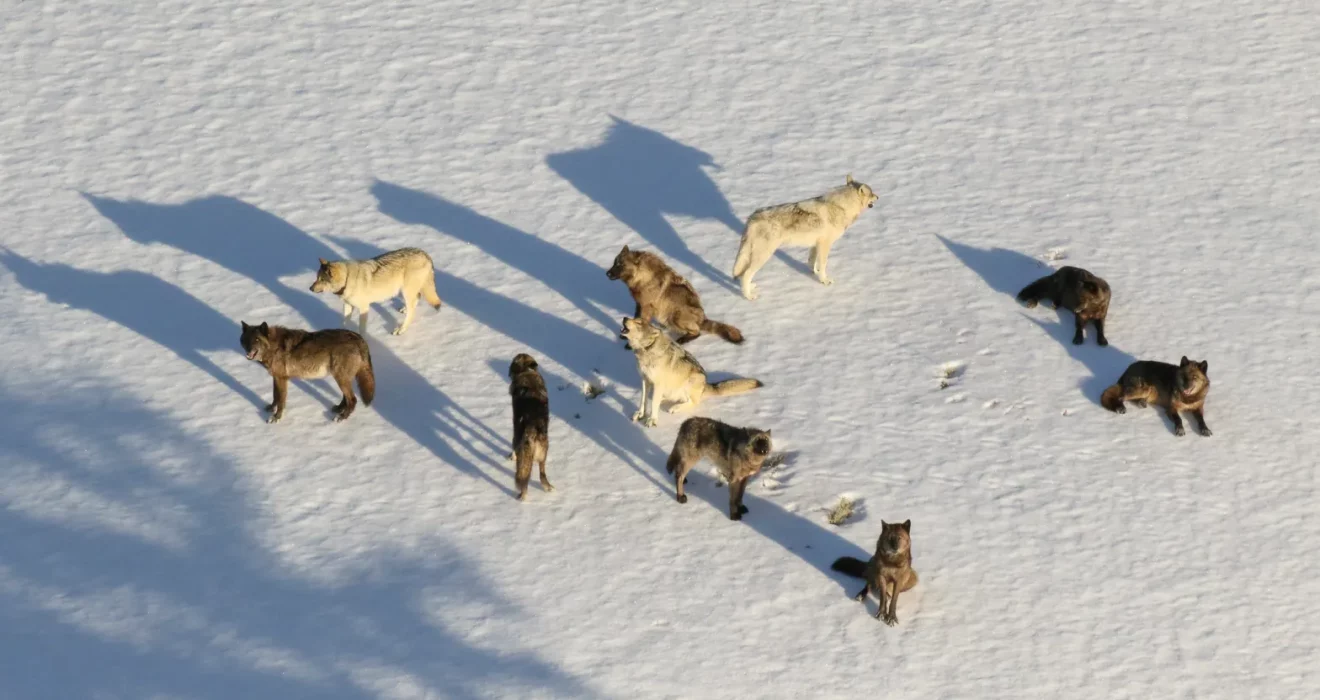The release of five gray wolves in the rugged expanses of Colorado signifies a historic chapter in wildlife conservation, capturing the collective imagination and igniting discussions across diverse spheres. This monumental event marks the initiation of an ambitious reintroduction program, backed by a 2020 ballot measure, aiming to restore apex predators to their natural habitats in the Colorado Rockies. The implications of this endeavor extend far beyond ecological considerations, delving into the heart of societal and political dynamics.
Colorado’s decision to reintroduce gray wolves reflects a commitment to the restoration of biodiversity and the re-establishment of a keystone species that once roamed these landscapes. However, the initiative has also exposed fault lines between urban and rural communities. While urban areas, predominantly Democratic, champion the cause of wildlife preservation, rural regions, characterized by conservative sentiments, express concerns about potential conflicts with livestock and traditional ways of life.
As the wolves embark on their journey from Oregon to the Colorado Rockies, the intricacies of ecological restoration, political divides, and the delicate balance between human interests and wildlife conservation come to the forefront. The Colorado wolf reintroduction becomes a microcosm of the complex interplay between environmental stewardship and the socio-political landscape, offering insights into the challenges and opportunities associated with such transformative conservation initiatives.
Unveiling the Ambitious Reintroduction Plan
In the vast expanse of Colorado’s Rocky Mountains, a monumental event unfolds as wildlife officials release five gray wolves into the wilderness. This marks the commencement of an ambitious reintroduction program, sanctioned by a 2020 ballot measure, aimed at restoring apex predators to their natural habitats. However, the planned release becomes a catalyst for heightened tensions between rural and urban communities, showcasing the divisive nature of wildlife conservation initiatives.
The Enigmatic Release on a Remote Mountainside
On a remote mountainside in Grand County, a mysterious release captures the imaginationof onlookers. The wolves, set free from crates, symbolize the initiation of the most ambitious wolf reintroduction effort in the U.S. in almost three decades. As the young female bounds into the forest, the reverential silence underscores the significance of the moment and the challenges ahead.
Political Divides: Urban Approval, Rural Opposition
The reintroduction plan, embraced in Colorado’s urban corridor, becomes a focal point of contention. Urban voters, predominantly Democratic, support the initiative, while conservative rural areas vehemently oppose it. The divide sharpens as ranchers express concerns about potential attacks on livestock, highlighting the clash between wildlife conservation and economic interests.
A Sharp Departure from Past Policies
The release stands in stark contrast to the aggressive wolf culling policies of Republican-led states. The judge’s denial of a temporary delay requested by the state’s cattle industry adds a layer of legal complexity. This departure signifies a paradigm shift in wildlife management, emphasizing coexistence over eradication.
The Wolves’ Majestic Entrance
The release ceremony unfolds with the first two wolves, 1-year-old siblings with gray fur, dashing into the golden grass. The crowd, a mix of wildlife enthusiasts and concerned citizens, witnesses the wolves’ entry into their ancestral habitat. Colorado Governor Jared Polis reflects on the larger-than-life presence of wolves, emphasizing the profound connection between humans and these iconic predators.
Ranchers’ Concerns and Wildlife Advocates’ Enthusiasm
While wildlife advocates initiate a wolf-naming contest, ranchers in the Rocky Mountains express anxiety. The fear of livestock attacks intensifies, mirroring incidents from Wyoming. To address these concerns, a compensation plan is in place, ensuring fair market value reimbursement for lost animals. However, hunting groups worry about the potential impact on elk herds and big game.
Challenges on the Horizon: Coexistence and Conflict
As the program unfolds, concerns emerge about potential conflicts between wolves and livestock. The spate of perceived assaults on rural communities exacerbates anxieties. Balancing economic mainstays with conservation goals becomes a delicate task for Colorado’s leaders. Residents who supported the reintroduction face the paradox of accepting wolf management strategies, including culling, to protect livestock.
Biodiversity Conservation in Action
For dedicated wildlife advocates such as Joanna Lambert, the release of gray wolves in Colorado transcends the immediate spectacle, evolving into a transformative journey for biodiversity conservation. This moment of rewilding signifies a critical stride in addressing the looming biodiversity extinction crisis that has gripped ecosystems globally. Lambert and her counterparts have invested years in concerted efforts to orchestrate the return of wolves to their native habitats, recognizing the pivotal role these apex predators play in maintaining ecological equilibrium.
As the wolves, embodying the culmination of persistent endeavors, gallop into the woods, the reverberations of this reintroduction effort resonate far beyond the Colorado Rockies. The event becomes a poignant testament to human commitment to reversing ecological imbalances and restoring the intricate web of life that spans generations.
In the unfolding saga of Colorado’s Wolf Reintroduction, the clash between conservation aspirations and economic realities stands as a compelling narrative. The release of these iconic predators serves as more than a mere ecological correction; it represents a societal reckoning with the complexities of harmonizing human interests with the imperatives of apex predators in an ever-changing landscape.
This transformative journey goes beyond the symbolic return to a natural balance; it signifies a conscious decision to navigate the intricate intersections of environmental stewardship, economic concerns, and the coexistence of diverse species. The echoes of this reintroduction effort resound through the corridors of conservation history, leaving an indelible mark on the ongoing dialogue about the future of wildlife and humanity’s role as stewards of the planet.

